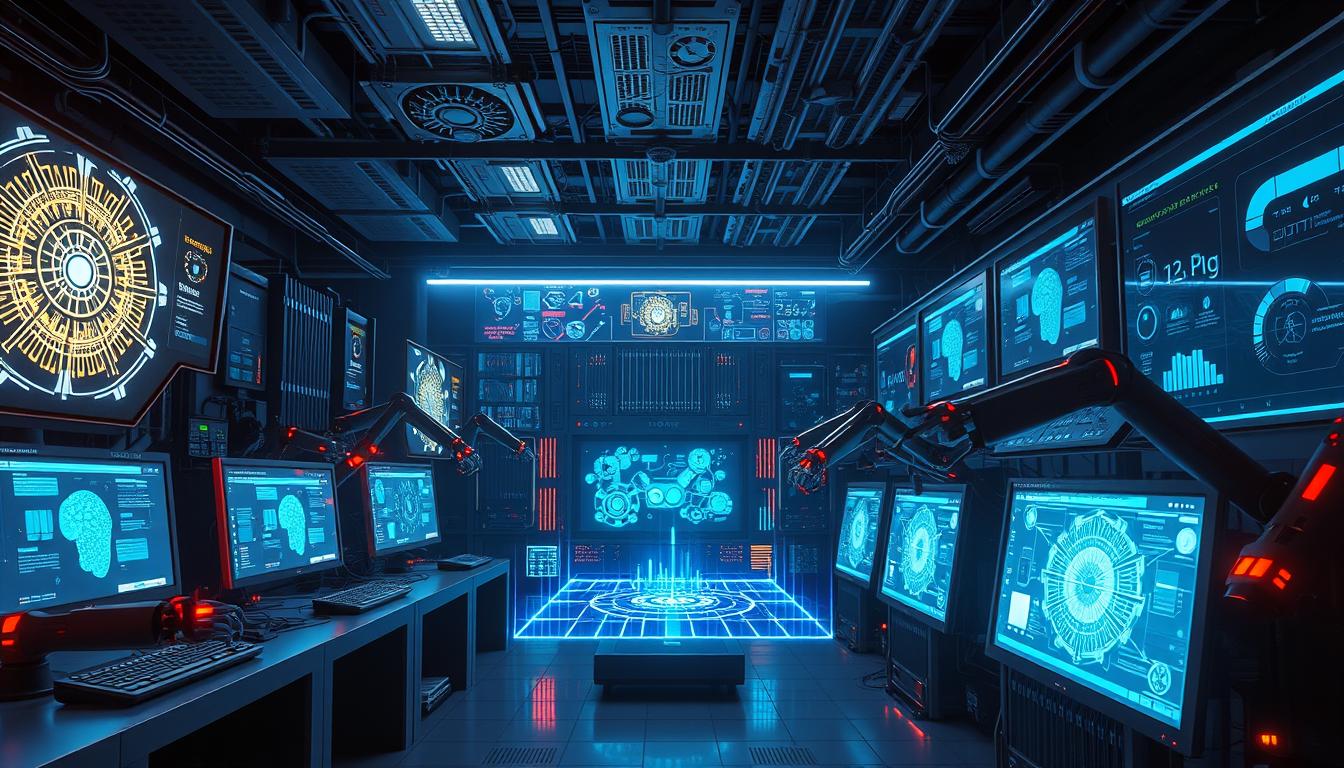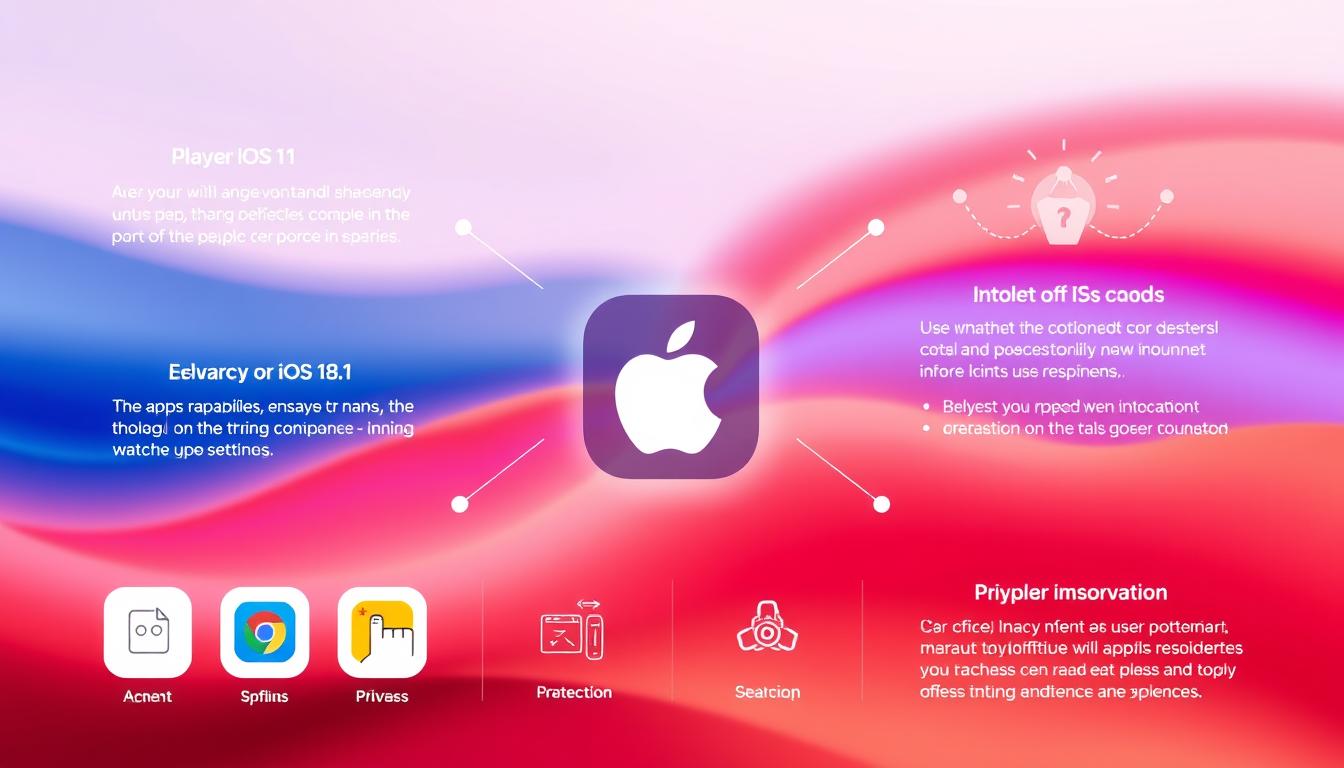Alphabet’s Google is working on a big step in AI technology. They’re creating an AI that can control a web browser on its own. This project, called Project Jarvis, will make online tasks easier, like research and shopping.
Project Jarvis will be released with the next version of Google’s Gemini large language model. It’s designed to improve AI and change how we use computers. This move shows Google’s goal to make automation and computing better in many ways.
Key Takeaways
- Project Jarvis is Google’s latest AI innovation aimed at computer automation.
- Reports indicate the new AI will handle complex tasks like online research and shopping.
- Google plans to launch Project Jarvis with the Gemini large language model.
- The development marks a significant step in Google’s AI strategy.
- This advancement highlights the ongoing evolution in AI technology within computing.
Introduction to Google’s AI Development
Google has been leading in artificial intelligence, investing heavily and innovating. This technological evolution has moved AI from theory to real-world use. It has greatly changed our tech world.
Background of AI in Technology
Artificial intelligence has been key in tech progress for decades. It has made systems smarter, doing tasks that humans used to do. This has led to new solutions, making AI essential in today’s tech.
Google’s Vision for AI Advancement
Google wants to make big changes in AI, not just small steps. They aim to change how we use technology with projects like Project Jarvis and Gemini. Their goal is to make AI work better with their products and services.
| Aspect | Details |
|---|---|
| Investment in AI | Continuous and strategic investments in AI research and applications |
| Project Highlights | Initiatives like Project Jarvis and Gemini large language model |
| Technological Evolution | Transition from theoretical research to practical, scalable solutions. |
| Computing Breakthroughs | Development of advanced AI-integrated computing systems over time |
| Future Prospects | Ambitious projects aimed at redefining the AI landscape |
Details on Project Jarvis
Google AI has made a groundbreaking leap with Project Jarvis. It aims to revolutionize task automation and web browsing AI. This advanced initiative is designed to automate internet-based tasks, from research to shopping, enhancing online efficiency for users mainly in the US. A preview of Project Jarvis is set for December 2023, marking a significant milestone in AI innovation.

Overview of Project Jarvis
Project Jarvis targets to automate web-based tasks for users efficiently and promptly, operating within just a few seconds. Initially, it will be limited to the Chrome web browser. The testing phase is expected to involve a small user group to ensure robust performance and fine-tuned operations. By incorporating AI innovations, Project Jarvis aims to bring unprecedented task automation capabilities to Google AI’s suite of tools.
Project Jarvis aims to enhance online efficiency for Chrome users in the United States. With a focus on web browsing AI, this initiative represents a pioneering step towards creating a fully automated internet experience.
Role of Gemini Large Language Model
Integral to Project Jarvis is the upcoming Gemini language model. This flagship AI tool, expected to be released in December, promises to reshape how AI models interact with digital environments. By leveraging the Gemini large language model, Google AI can ensure that Project Jarvis performs sophisticated tasks with high precision and accuracy.
The Gemini language model is pivotal in advancing task automation. It enables a computer-using agent capable of autonomous internet navigation. This makes Project Jarvis a formidable player in the AI landscape, comparable to initiatives by other tech giants like Microsoft-backed OpenAI.
| Project Aspect | Details |
|---|---|
| Preview Date | December 2023 |
| Primary Function | Task Automation, Web Browsing AI |
| Initial Browser Support | Chrome |
| User Group for Testing | Small Group |
| Action Completion Time | Few Seconds |
| User Efficiency Targeting Area | US |
Google AI continues to push the boundaries of AI innovation with such cutting-edge projects. Project Jarvis and the Gemini language model are set to transform how users interact with the web. They herald a new era in AI-driven automation.
Google to develop AI that takes over computers, The Information reports
Google is working on a new AI system. It will be able to run computers on its own. This project could make Google a leader in AI, thanks to its advanced learning and automation.
Google is always pushing the limits of AI. This new project shows their commitment to innovation. The AI aims to do many online tasks by itself, just like a human.
This move puts Google in competition with other tech giants in AI. Google wants to change how we interact with machines. They’re exploring new ways AI can help us.
The Information AI report talks about using this AI in everyday computers. It will handle simple tasks and more, all by itself. This could start a new era of machines working without us.
Comparison with Other AI Efforts
Google is leading the way in AI, but other tech giants are close behind. This section looks at Microsoft’s work with OpenAI and Anthropic’s efforts. It shows how the AI race is heating up.
Microsoft and Autonomous Browsing by OpenAI
Microsoft is teaming up with OpenAI to make big strides in AI. They’re working on OpenAI autonomous browsing. This means creating agents that can navigate the web on their own.
This could change how we use the internet. It’s a big step towards making AI better and setting new standards in the industry.
Anthropic’s Similar Pursuits
Anthropic is also making waves in AI. They’re creating software that works well with computers and browsers. This is pushing the limits of what AI can do.
The AI competition between tech companies is fierce. Everyone wants to lead in AI innovation. They’re all working together to set strong industry AI standards.
Technological Singularity and Its Implications
The idea of a technological singularity, where AI becomes smarter than humans, is a big topic today. It has deep effects on how we interact with machines and our society.
Machine intelligence is growing fast. For example, Google and UNC’s Generative Infinite Games and Apple’s Ferret-UI show how AI is changing quickly. These advancements are not just technical but are changing the foundation of our AI future.
It’s important to understand how autonomous AI affects our lives. Let’s look at two main areas:
- Ethical Concerns: As AI starts to act like or even outdo humans, it raises big ethical questions. We must think about who is responsible, how decisions are made, and what rights AI should have.
- Practical Consequences: AI’s role in areas like healthcare, finance, and transportation could change our society a lot. For example, Mindcraft project by GitHub’s kolbytn and Meta Open Materials 2024 are leading the way in using AI for real-world problems.
This time of technological singularity brings advanced AI but also makes us rethink our relationship with machines. Projects like Waymo’s self-driving cars and Ohio State University’s space research are groundbreaking. They show the slow but important journey to full AI autonomy.
Advanced Algorithms and Neural Networks Driving AI
Today’s AI systems use advanced algorithms and neural networks. These technologies help AI work faster and more accurately. They are key to AI’s growth and future advancements.
Importance of Advanced Algorithms
Advanced algorithms are at the heart of AI’s latest achievements. They help AI learn, make decisions, and solve problems. For example, Amazon Web Services (AWS) uses algorithms like Amazon SageMaker to speed up model development.
These algorithms also play a big role in autonomous systems. They help underwater vehicles and AI-driven cloud services work smoothly.
Role of Neural Networks
Neural networks are crucial in AI. They work like the human brain, processing lots of data and finding patterns. Amazon Polly uses neural networks to turn text into speech.
Amazon Transcribe does the opposite, turning speech into text for customer support. Convolutional neural networks (CNNs) have also changed how we process images. They’re used in self-driving cars and understanding complex traffic.
| Companies/Technologies | Applications | Advancements |
|---|---|---|
| Amazon Web Services (AWS) | Cloud Computing, AI Services | Automated model development, AI-based cost optimization, Real-time infrastructure monitoring |
| Amazon Polly | Text-to-Speech Conversion | Uses AI neural networks for high-quality TTS |
| Amazon Transcribe | Speech-to-Text Services | AI-driven transcription for customer support |
Automation and Computer Control
Computer automation is changing the game, thanks to smart technologies and autonomous systems. This is leading to a new industrial revolution, fitting perfectly with industry 4.0. AI is set to change how computers handle tasks in many fields.
Potential for Complete Computer Automation
AI in industry is making computers control tasks better than ever before. It lets systems learn, decide, and act on their own, needing less human help. This makes work smoother and more productive.
Autonomous systems are key to full computer automation. They watch, analyze, and improve processes live, cutting downtime and boosting efficiency. With AI, businesses can save money and do better work.
Impact on Various Industries
AI is changing many industries, bringing big benefits:
- Manufacturing: AI and autonomous systems make production better and more consistent. They cut down on mistakes, improve supply chains, and boost quality.
- Healthcare: AI helps with better diagnoses and treatments. It manages patient data, plans procedures, and even helps in surgeries, leading to better health outcomes.
- Logistics: AI optimizes routes, manages stock, and predicts demand. This means faster deliveries and better use of resources, improving service.
- Retail: AI helps with stock, customer service, and sales predictions. It makes shopping more personal, increasing satisfaction and loyalty.
| Industry | Change Facilitated by AI Transformation |
|---|---|
| Manufacturing | Enhanced accuracy in production, reduced human error |
| Healthcare | Personalized treatments, precision diagnostics |
| Logistics | Optimized routes, efficient inventory management |
| Retail | Personalized customer experiences, improved service levels |
AI is just starting to make a big impact. As smart technologies get better, we’ll see even more changes. This will lead to a future where work is more efficient and innovative.
Security and Ethical Considerations
As AI technology grows, we must focus on security and ethics. It’s crucial to have strong rules and watch over AI use. This includes stopping AI misuse and protecting privacy. With autonomous systems, we need to think about privacy and its effects.
Cyberattacks like malware and phishing are big threats. They can harm our data and stability. So, keeping our digital world safe is key in an AI age.
Privacy Concerns
Keeping personal info safe is a big deal in AI. AI systems connect a lot, making them vulnerable. We need strong security plans to protect them.
It’s important to spend wisely on security. Cyber Insurance helps cover costs of cyber attacks. Decision theory helps find the right balance between security, performance, and cost.
Ethical Dilemmas of Autonomous Systems
Autonomous systems bring up big ethical questions. We must make sure they follow rules to keep us safe and trust them. Laws are changing to deal with AI misuse, like ‘deepfake’ issues.
Using models like PIPRECIA-S helps us understand cyber threats. It looks at how bad the impact is and the financial loss.
| Cybersecurity Threat | Impact | Prevention |
|---|---|---|
| Malware | High | Antivirus Software |
| Ransomware | Severe Financial Losses | Regular Backups |
| Phishing | Data Theft | Awareness Training |
| DDoS Attacks | Operational Downtime | Firewalls |
Conclusion
Google’s effort to make an AI that can control computers on its own is a big step forward. It shows how far technology has come and how important it is to use AI wisely. Google’s work combines new algorithms and neural networks, aiming for better automation and learning.
The future of computers is not just about new tech. It’s also about using AI the right way and keeping it safe. As AI gets smarter, we must think about its impact on society. We need to balance new ideas with strong ethics and privacy rules.
AI’s future depends on working together with humans. We must focus on ethics and safety to make AI better. This way, AI can change the world for the better, while we watch out for any problems.


